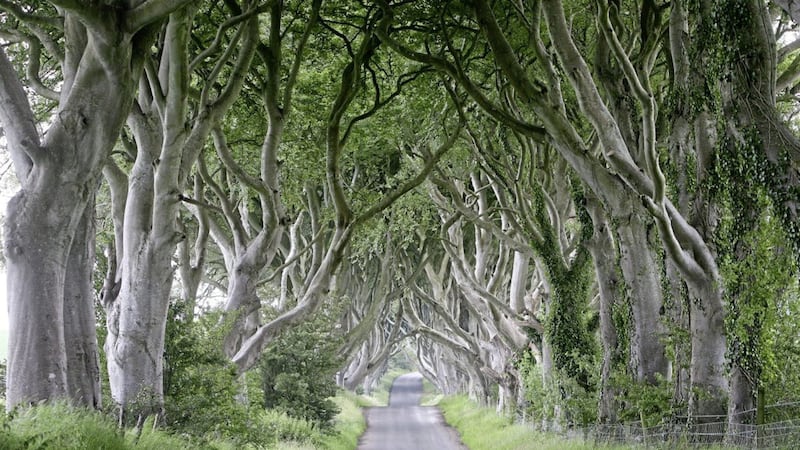IT MAY surprise some to learn that the beech (Fagus sylvatica) is not a native Irish tree. There are tens of thousands of them in our forests, woodlands and hedges, stretching from Mizen to Malin, but this familiar feature of the Irish landscape only arrived some 1,000 years ago.
The cut-off point for whether a tree is regarded as native or not came some 11,000 years previously, when the island of Ireland roughly as we know it today emerged from beneath retreating ice.
Other well-known trees that have colonised and naturalised themselves on the island post-Ice Age, but therefore don’t rank as natives, include the sycamore and the larch.
The beech may not quite support the same variety of wildlife as a great oak but our native fauna have learned to love it, as have gardeners. Its appeal lies in the tree’s diversity, coupled with its ability to somehow hang on to to much of its autumn/winter foliage when others lose theirs. This ‘holding on’ of leaves through the winter months, an attribute shared with oak and hornbeam, is known as marcescence, from the Latin, marcescere, meaning to fade.
When a beech is left to grow undisturbed, its frame not sawed or pruned, it takes on a majestic, magical shape with elegant silvery-grey limbs spreading outwards and arching upwards strategically rather than plotting a vertical line.
It’s beech which line the road at the Dark Hedges in Co Antrim, a truly stunning display that merits the attention it receives, even if its popularity isn’t in the trees’ or Stranocum’s residents’ best interests. Thought to be planted anything between 150 and 250 years ago, we may never know for sure that the person or people who put the trees there could have envisaged how spectacular the avenue would look more than a century after their death, though somehow you know it wasn’t an accident.
In Scotland, a marginally more conventional beech hedge also draws a large number of tourists. The Meikleour beech hedge, a few miles north west of Dundee, is said to be Britain’s longest, stretching 530 metres (about one third of a mile) and towering 30 metres (100 ft).
It was planted in 1745, apparently by those about to take up arms in the Jacobite Rebellion, with none subsequently returning alive. In tribute, the trees have been left to grow as a living memorial. Reflecting how key the beech’s autumn foliage is to its popularity, visitors flock to the Meikleour hedge when its leaves turn from green to russet and gold.
Such displays are difficult to improve on but arguably the copper beech (Fagus sylvatica f. purpurea) does just that. A cultivar of common beech, derived from natural mutations, the copper beech possesses all the best attributes of its close relative but the foliage is much more eye-catching. The leaves are coppery to deep purple in colour, which accounts for its popularity not only as a hedge but as a standalone ornamental tree.
Both conventional and copper versions will be appearing in nurseries around now, being sold bare root, making them a much more economical option. The key to creating a thick, solid beech hedge is judicious and regular pruning to ensure the barrier retains its shape. Neglect to do this and posthumously you may end up with your own version of the Dark Hedges.








